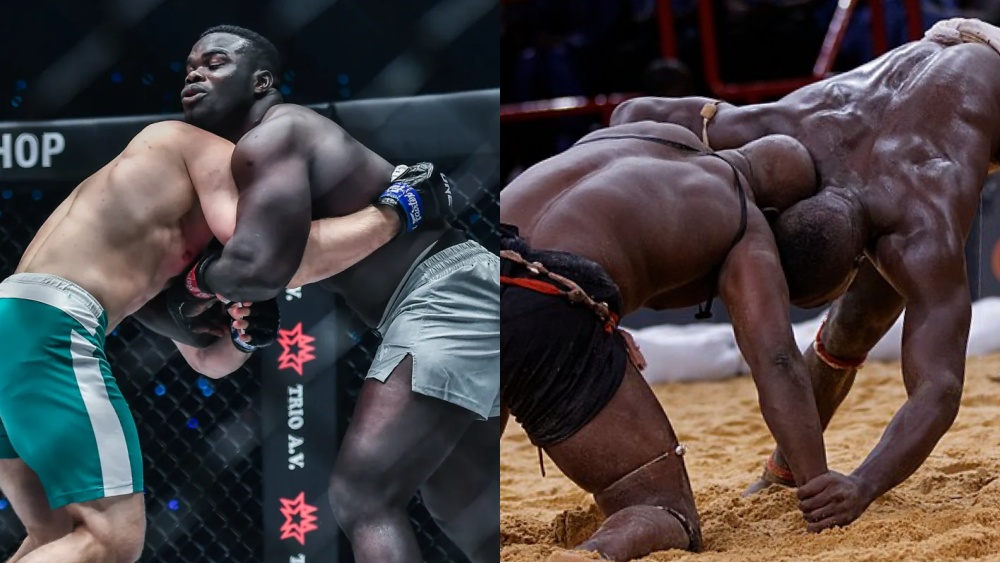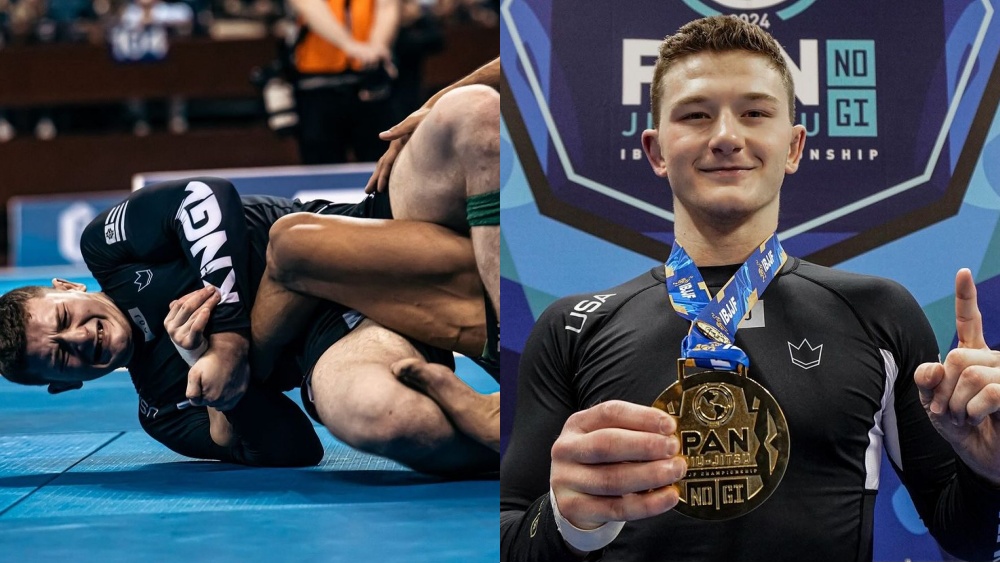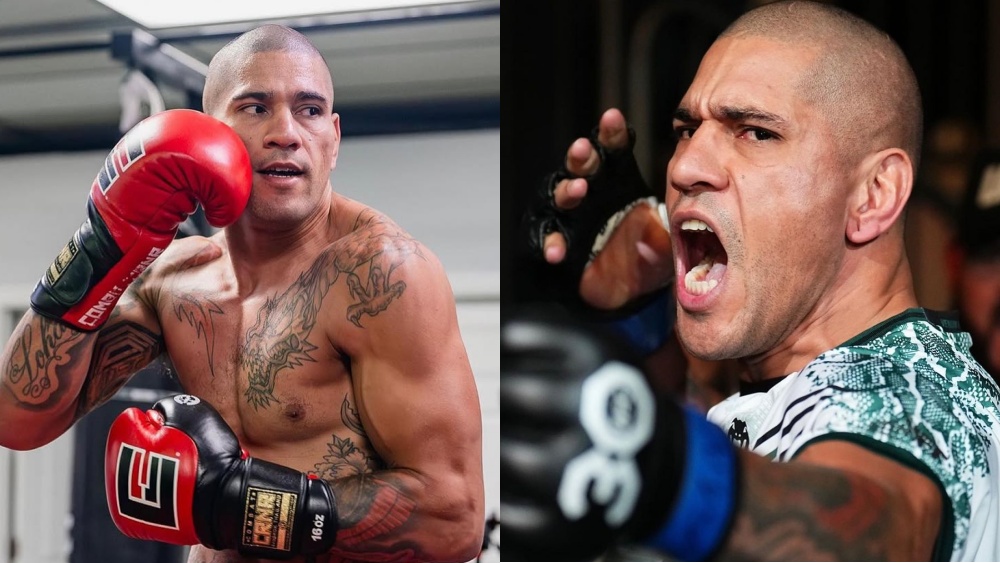With Omar “Reug Reug” Kane’s emergence onto the world stage in Mixed Martial Arts, fight fans can’t help but wonder about the heavyweight star’s origins. He may be another colossal fighting figure that keeps the fans waiting at bay to watch him fight. More than his gigantic figure is his rich African culture, which he is known for showcasing as the base of his fighting style. In this article, let’s look closely at Africa’s Laamb wrestling.
Africa’s Laamb Wrestling
Senegalese wrestling, also known as Laamb, is one of the most popular sports in Senegal today. More than just a sport, Laamb is a cultural phenomenon that combines the country’s traditions and community. Laamb wrestling can be traced back to the 14th century when West Africa’s Serer people performed at the end of harvest seasons as part of the celebrations to determine the strongest man in the community. It was also used as a martial art to prepare soldiers for war and for kings to settle disagreements and disputes.
Nowadays, it has evolved into one of the largest sports in West Africa, with thousands of fans filling the stadiums to get a view of the live-action event. Competitors must participate in a pre-fight ritual such as dancing in the sand, oiling their bodies, or rubbing their feet on stone before entering the battleground to repel “black magic.” This is much considered a physical and spiritual exercise.
In terms of fighting techniques, Senegal’s version of wrestling took inspiration from different martial arts like Judo, Freestyle, and Greco-Roman wrestling. Without the kurtka (jacket), Laamb wrestling can be compared to Russia’s martial art Sambo, where one facet allows strikes, and the other, which does not, mainly focuses on the grappling aspect, making it a considerable base for MMA. Laamb wrestlers wear loincloth wrappers and typically strike from the clinch. The loincloth also helps them with control and set up their takedowns effectively.
Its rules are simple: the competitors can strike their opponents using their hands or feet. To win, an athlete must make their opponent contact the ground with a body part such as the knee, hands, head, or back, or force them into submission. The fight may end if one competitor is knocked out or pushed out of bounds from the battleground. Bouts typically last two to three minutes because of the different possible ways to win.
The Laamb Wrestling Techniques
For easy reference, some of Laamb’s wrestling techniques are comparable to the moves we can see in Judo, Freestyle, and Greco-Roman wrestling. While the Laamb’s techniques are unique on their own (as you may notice the wrestlers avoid doing takedown entries that will force their knees to touch the ground), we’ll translate them to their equivalent or closely equivalent technique in wrestling for better appreciation. Let’s cover them below.
1) XAAR
At 2:43 seconds, Xaar can be compared to the high crotch lift to dump in wrestling. Instead of shooting and locking your hands together for the high crotch, Laamb wrestlers keep an upright stance as they grab for a high crotch (bottom arm) while the top locking arm grabs the opponent’s loincloth and finishes by dumping the opponent down.
2) YANU
At 3:32 seconds, Yanu is like wrestling’s fireman’s throw. Senegalese wrestlers set this up from the opponent’s underhook as they pressure forward. The defensive wrestler that does the Yanu picks the opponent up, keeping as upright as possible instead of kneeling down and making knee contact with the ground. Yanu is then finished by throwing the opponent to the sand.
3) CAXABAL
At 3:46 seconds, Caxabal is the equivalent of an inside trip. From the 50-50 position from standup (over and under hook), the caxabal is initiated from the opponent’s underhooking side. It is one of the most common takedowns in Laamb wrestling.
4) PALAKE
At 5:59 seconds, Palake in wrestling is like the underhook to knee pick. Assuming you have an underhook with your right arm, your left arm then does the knee pick as you drive forward to off-balance the opponent.
5) SIMPI
At 8:31 seconds, Simpi can be compared to the single leg to back arch/lift and dumping the opponent down. Laamb wrestlers set up by snatching the opponent’s leg up, grabbing it behind the opponent’s knee, and trapping it between the legs. Their other hand controls the opponent’s far hip as they look up to lift and slam the opponent down.
6) BUDEE GINAW
At 10:32 seconds, The Budee Ginaw lifts the opponent and slams them down from the back— what is commonly known in grappling as a mat return from standing back control.
7) MBOT
At 12:21 seconds, Mbot is similar to the Uchi Mata, but instead of kicking your leg far behind to outbalance the opponent, you keep your feet planted on the ground as you drag the opponent around on the side of your tricep control (the other arm underhooks).
8) MBOTUM TANK
At 14:47 seconds, Mbotum Tank is similar to the Ashi Guruma, but instead of grabbing the opponent’s near collar, Laamb wrestlers use an underhook or hold the opponent’s near-side hip.
9) WEULBEUTI
At 15:53 seconds, Weulbeuti is like the Yoko-Guruma (side wheel), where the opponent attempts an O-goshi (hip toss) and is then countered by the defensive wrestler by reversing and throwing them down the ground.
10) JARGADALE
At 16:41 seconds, Jargadale is a 360-degree rotation mainly used to drag the opponent around for misdirection. If the opponent can maintain their balance, the 360 drag around can be used to set up takedowns or take the opponent’s back.
11) KOTE
At 20:03 seconds, Kote is a version of snatching the opponent’s head down to get the front headlock and use it to drag the opponent down. Laamb wrestlers then follow the opponent to the ground and move to the side to finish with a cradle as the opponent tripods or gets behind them.
Conclusion
Laamb is a great reminder that martial arts are a worldwide passion. To many, it is a way of life and a hope for a passage to taste the better things, especially for the youth. With the thousands of specimens we can observe relentlessly competing in the stages of Senegal’s wrestling field, we’ll undoubtedly see another champion emerge from such a background in the near future.
You may also like:
















